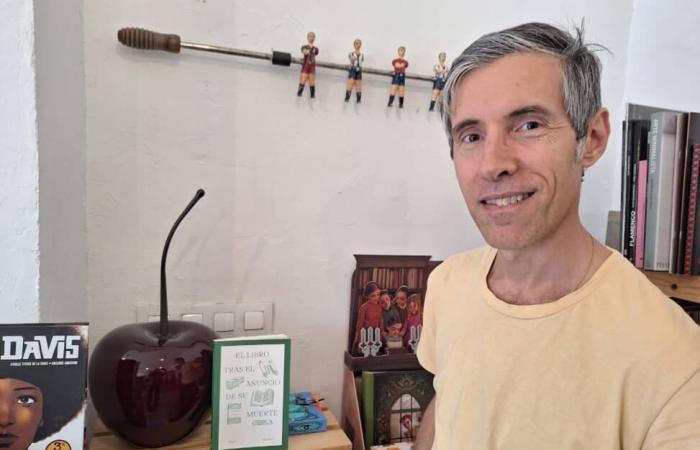For Narváez, an editorial graphic designer, the book is “a perfect object” and that is why it is “very difficult to put an end to it.” Then, if it is beautifully made and the content is excellent, “that is already the sum,” highlights the Ciudad Real creator, who addresses in this essay how, “paradoxically. “What the technology that came to destroy the book has done is reinforce it.”
In the case of the press, the power of digital has “practically devoured it”, while, “despite the fact that there is a decline in many media, my conclusion in this essay is that this threat of death to the book, which seemed like it was going to be replaced by tablets, has not happened and has even “been good for it because it has allowed us to put a value on material things again”.
“There are books and editorial products that have disappeared, such as dictionaries, travel guides, etc. Those books that are more purely functional have been swallowed up by digital technology, but others have not.” In fact, the figures are there, book sales are on the rise, commented Narváez, who referred especially to those that contain images, such as art catalogues, which “are now made better than ever because there are more possibilities than ever to make them better, the material is valued and so, far from being a threat, digital technology has finally become an opportunity.”
Among the reasons he argues are that printed images are considered “more reliable than those on screen” and because with objects, not just with books, “it is easier to establish an emotional relationship than with something dematerialized,” to which is added the existence of the ritual of reading and closing as well. Compared to digital platforms that are “an infinite scroll, without a closure,” for the reader it is “very necessary to close and by closing it you anchor the memory. It is easier for you to remember a book you have read in physical form than something you have read on screen because it anchors the memory better” and concentration, deep attention, is usually greater.
There are other aspects such as algorithms. “Note that the Internet, at the beginning, appeared as the epitome of freedom and was an amazing and very promising medium. But today the internet is not what it was, now the algorithms are pointing you towards what you have to see, it is very far from freedom, not to say that it goes the opposite. And then there are also fake news, which have always existed, but with digital, they have been enhanced.”
Narváez, who has a PhD in Fine Arts from the Faculty of Cuenca, also referred to durability. Before, “you had a ZX Spectrum on a diskette, on a floppy disk, and where is that now?” For example, “I had a first-generation IPop that was supposed to be the future of music, but the battery blew and all the music I had on it went down the drain, and yet the vinyl records I have from when I was twelve, thirteen or fourteen are still there.” Digital is subject to operating system updates, to a multitude of technical issues, some of them very self-serving, and there is even planned obsolescence, while “with books it is not exactly like that.”
In any case, his essay ‘The Book after the Announcement of His Death’ “is not a text that raises the issue of analogue versus digital, they are not opposites. In fact, I affirm that if physical books are made better now it is partly thanks to digital technology, that is to say, to digital layout and design programs.”
“The book is not dead but very alive,” emphasizes the author of “a praise that is not strictly sentimental or emotional, which it is too, but is also reasoned speaking from practice” when dedicating himself to book design.


